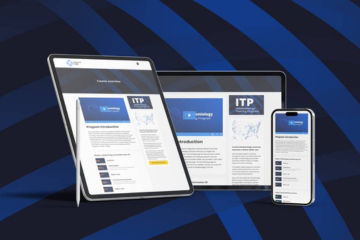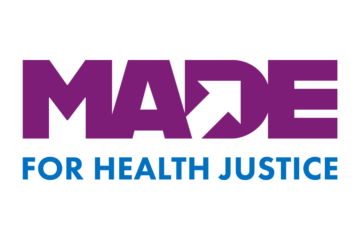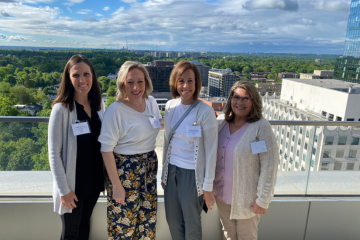With coverage of the coronavirus seemingly everywhere, the role of the public health workforce is front and center in news coverage and daily conversations. The de Beaumont Foundation is committed to strengthening and advocating for the public health workforce and we hope that this renewed interest in governmental public health can translate into a better understanding of what public health does, who our public health practitioners are, and how they are funded.
For some, this may be one of the first times they’ve thought about this part of government. Many don’t realize that their state and local health departments — the ones on the ground preparing for and responding to COVID-19 — are not federal agencies.
In partnership with the Association of State and Territorial Health Officials (ASTHO), the Big Cities Health Coalition, and the National Association of County and City Health Officials (NACCHO), de Beaumont conducts the Public Health Workforce Interests and Needs Survey (PH WINS). This survey of the state and local public health workforce is the only nationally representative source of this type of data — including demographics, engagement and morale, training needs, and turnover. For example, we know from PH WINS that:
- Almost half of the workforce is considering leaving their agency within five years, despite relatively high levels of job satisfaction.
- Demographically, the workforce (and especially leadership) does not fully represent the population it serves in terms of gender, age and race/ethnicity.
- Most employees are satisfied with their job, but fewer are satisfied with their organization and even fewer with their pay.
The Larger Context
After collecting a great deal of data about the public health workforce through PH WINS in 2014 and 2017, we still knew little about how the workforce compared with other state and local government agencies. So the de Beaumont Foundation commissioned a study by the Center for State and Local Government Excellence (SLGE) to examine the differences between the public health workforce and the government workforce as a whole. (Read the report, “How Does the Public Health Workforce Compare with the Broader Public Sector?“) We wanted data that would provide a larger context for the PH WINS findings. We hoped that the data could inform one of our strategic goals — to strengthen the public health workforce, including attracting high-quality professionals to the field and retaining them once they’re hired — by understanding the field’s strengths and weaknesses in the context of state and local government generally. The results of the SLGE research were eye-opening to us, and they offer important insights that can benefit the field.
What We Learned
Compared with employees in the general governmental workforce, governmental public health workers:
- are more racially and ethnically diverse;
- have more education;
- are better compensated; and
- stay at their agencies longer.
Those findings are encouraging, and health departments should be recognized for their success in attracting well-qualified and diverse employees to serve their communities.
However, there are also challenges.
PH WINS 2017 found that nearly half of state and local public health workers are considering leaving their organization within the next five years. To understand what’s driving this troubling trend, what insights can we gain from the larger government sector, which is contending with many of the same challenges?
According to data from the SLGE State and Local Workforce Survey series, respondents from the state and local government sector identified these five generalizable skill sets most needed for new hires:
- interpersonal skills:
- written communications;
- technology;
- management; and
- finance
While not a perfect comparison, PH WINS data indicate that public health professionals value similar skill sets — communications, management, technology, and finance. Respondents placed an especially high value on effectively targeting communications to different audiences, collaborating with traditional and non-traditional partners to improve community health, and managing change in response to evolving internal and external circumstances.
Understanding the values that unite the professionals across sectors can clue us in to how we might respond to workforce challenges together.
Using Workforce Data for Change
The more data we collect on our workforce, the more we can develop resources, tools, and programs specific to recruitment and retention challenges. Two examples of how de Beaumont has leveraged data to address unmet needs are Building Expertise in Administration and Management (BEAM), an online certificate program for public health professionals, and Research to Action, a learning collaborative that builds change management skills while improving recruitment and retention.
PH WINS has pointed to knowledge gaps in budgeting and financial management training, which more than half of respondents consider a top training need. To help public health professionals become proficient in these skills, the de Beaumont Foundation and the University of Miami partnered to create BEAM. The first online business certificate program developed by public health professionals for public health professionals, BEAM provides a solid foundation of essential financial management skills not typically taught in public health education programs or on the job, such as budgeting, procurement, and contracting.
Research to Action was created in response to the PH WINS findings that almost half the employees of state and local governmental public health agencies are considering leaving their organizations within five years. In collaboration with ASTHO and NACCHO, the de Beaumont Foundation created this positive change certificate program, strengthening state and local health agency leadership while increasing the capacity to recruit new talent and retain high potential employees in the agency.
Where Do We Go from Here?
In public health, we benefit when we are open to learning from other sectors and draw best practices from a range of sources. The broader government workforce has a lot to teach us, and there are many possibilities for addressing recruitment and retention issues side by side. In a report that will be released later this year, SLGE will detail collaboration between public health departments and other parts of local government in response to public health challenges.
As the field of public health continues to respond to COVID-19 and protect the public’s health in many other ways, we look forward to gaining further insights that will help us better support our public health workforce. We will work to incorporate learnings from the broader government workforce into our initiatives and partnerships. The SLGE report is one step toward that goal.







